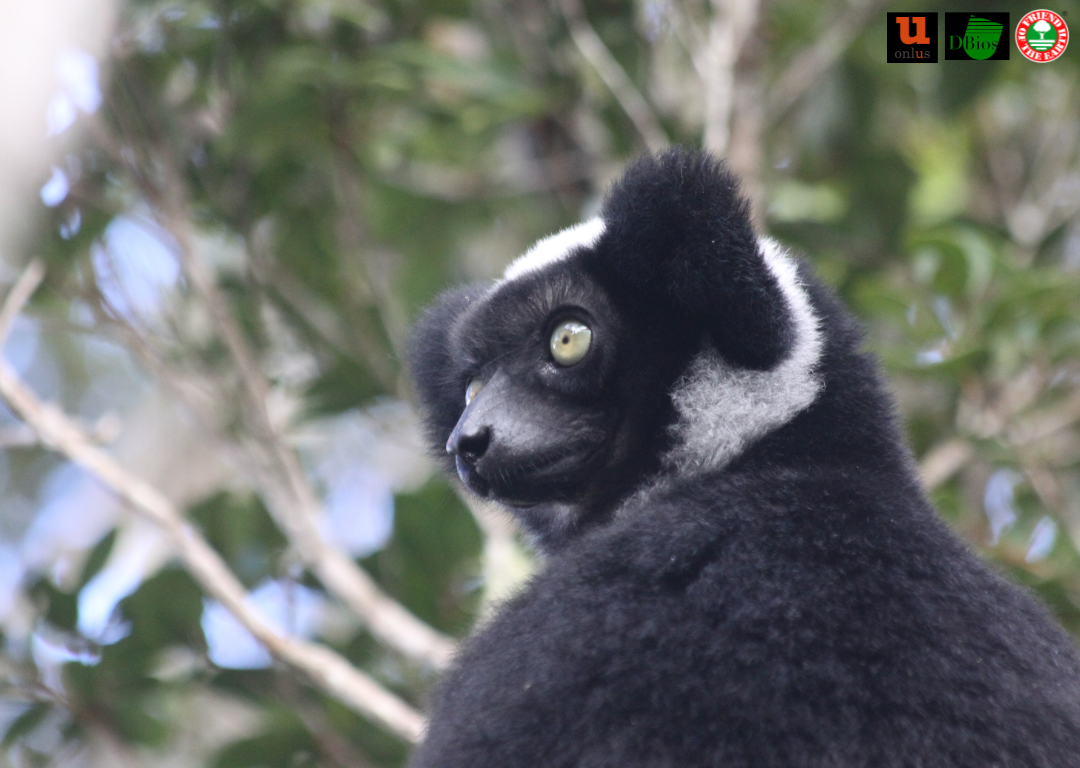The indri is the only lemur that communicates through song, echoing through the forests of Madagascar. However, this marvelous and distinctive rhythm could disappear if nothing is done. The indri (Indri indri) has been classified as critically endangered since 2014. For this reason, Friend of the Earth, a project from the World Sustainability Organization, is eager to join the efforts to protect Madagascar’s singing lemur.
Friend of the Earth recently joined an ongoing international project to save the indri: the Maromizaha Conservation Project. Initiated in 2004 by researchers from the University of Turin, the project is focused on promoting survey activities of 12 indri families in Maromizaha protected area. Since the beginning of the year, Friend of the Earth has joined this initiative in collaboration with U ONLUS, the University of Turin, and GERP (Groupe d’Étude et de Recherche sur les Primates).
ONE OF THE MOST THREATENED LEMURS IN THE WORLD
In the heart of the forests of Madagascar lives the indri, one of the largest living lemurs, famous for its singing and roaring that it uses to communicate. Unfortunately, this fascinating animal is one of the most threatened lemurs in the world, facing the risk of extinction due to the ongoing destruction of its habitat.
The indri lives in the Dragon Tree Rainforest of Maromizaha, an area that was officially declared as a new protected area in 2015. Approximately 200 indris reside in this primary forest, with an additional 1,000 estimated to be living in the surrounding areas.
With its long white and black coat, foxy snout, large greenish eyes, and rounded ears, the indri – called «Babakoto» by the locals – is known for its distinctive morning songs made up of melodic sequences that can last up to 3 minutes. The songs resonate with traits of rhythm, duets, and harmonized choruses, an ability that only one other primate has mastered, humans.
THE THREATS
In the past, indris were partly protected from hunting by local fadys, traditional taboos that forbid eating their meat. Today, however, two factors contribute to the unsustainable increase in indri hunting: diminished belief in taboos amongst the Malagasy people and the influx of immigrants who do not follow local traditions.
However, the greatest threat pushing the indri towards extinction is due to the disappearance of its natural habitat onset by deforestation. The degradation of the Maromizaha forest has mainly been caused by the practice of slash and burn agriculture to convert the forest into agricultural land, selective logging, and mining.
Unfortunately, the indri is an animal that cannot survive in captivity, which means it must be protected in its natural habitat.
THE PROJECT
World Sustainability Organization/Friend of the Earth started supporting the study and monitoring of indri populations thanks to the «Maromizaha Conservation Project» alliance.
There are currently 12 groups of indris under daily observation. Four local guides are in charge of studying their behavior and movements. Monitoring is carried out by both focal observations and by using special acoustic recorders placed in strategic locations, which are moved every three weeks.
The project is also engaged in habitat restoration through the management of several bamboo and other native plants’ nurseries.
A participatory approach underpins the project’s operations, with support and training provided to local populations that are intended to promote and protect indigenous knowledge and traditional methods. Environmental education is also emphasized to foster greater involvement from the people, including activities in local schools and scholarships for disadvantaged children to provide them with the opportunity of an education.
FRIEND OF THE EARTH: ENVIRONMENT AND SUSTAINABILITY
The Maromizaha project joins other important awareness campaigns launched by Friend of the Earth, such as «Save the Forests,» which aims to protect endangered species and habitats with the involvement of local populations. Friend of the Earth also promotes products from sustainable agriculture worldwide, contributing to the protection of natural habitats.




